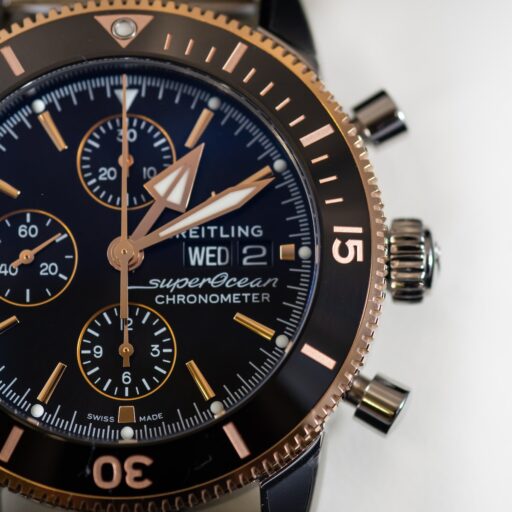Support our educational content for free when you purchase through links on our site. Learn more
When Did Peter Henlein Invent the Watch? [2024] 🕰️
Quick Answer: Peter Henlein, a locksmith and clockmaker from Nuremberg, Germany, is often credited as the inventor of the watch. He is known for making small ornamental portable clocks that were worn as pendants or attached to clothing, considered the first watches. The earliest existing example of a watch, the Watch 1505, has been attributed to Henlein. While he did not invent the mainspring, his innovation in miniaturization and coil spring mechanism contributed to the development of portable watches. Henlein’s craftsmanship and watches were highly sought after by notable figures of the 16th century. In 1905, a watch exhibition in Nuremberg celebrated the 400th anniversary of the invention of the pocket watch, awarding outstanding works with Henlein medals.
Are you curious about the origins of the watch? Who invented it and when? Well, you’ve come to the right place! In this article, we’ll delve into the fascinating history of the watch and explore the contributions of Peter Henlein, the man often credited as its inventor. So, let’s turn back the hands of time and discover when Peter Henlein invented the watch!
Table of Contents
- Quick Answer
- Quick Tips and Facts
- Background: The Evolution of Timekeeping
- The Innovations of Peter Henlein
- Henlein’s Watches: Craftsmanship and Influence
- FAQ
- Conclusion
- Recommended Links
- Reference Links
Quick Answer
Peter Henlein, a locksmith and clockmaker from Nuremberg, Germany, is often credited as the inventor of the watch. He is known for making small ornamental portable clocks that were worn as pendants or attached to clothing, considered the first watches. The earliest existing example of a watch, the Watch 1505, has been attributed to Henlein. While he did not invent the mainspring, his innovation in miniaturization and coil spring mechanism contributed to the development of portable watches. Henlein’s craftsmanship and watches were highly sought after by notable figures of the 16th century. In 1905, a watch exhibition in Nuremberg celebrated the 400th anniversary of the invention of the pocket watch, awarding outstanding works with Henlein medals.
CHECK PRICE on: Amazon, Walmart, Etsy
Quick Tips and Facts
- Peter Henlein, a locksmith and clockmaker from Nuremberg, Germany, is often credited as the inventor of the watch.
- He is known for making small ornamental portable clocks that were worn as pendants or attached to clothing, considered the first watches.
- The earliest existing example of a watch, the Watch 1505, has been attributed to Henlein.
- Henlein’s innovation in miniaturization and coil spring mechanism contributed to the development of portable watches.
- While he did not invent the mainspring, his craftsmanship and watches were highly sought after by notable figures of the 16th century.
- In 1905, a watch exhibition in Nuremberg celebrated the 400th anniversary of the invention of the pocket watch, awarding outstanding works with Henlein medals.
Background: The Evolution of Timekeeping

Before we dive into Peter Henlein’s contributions, let’s take a quick trip through the history of timekeeping. Humans have always been fascinated by the concept of time and finding ways to measure it accurately. From ancient sundials to water clocks and mechanical clocks, timekeeping has evolved over centuries.
The invention of the mechanical clock in the 14th century marked a significant milestone in timekeeping. These early clocks were large and immobile, usually found in churches or public spaces. However, the desire for portable timekeeping devices soon emerged.
The Innovations of Peter Henlein
Now, let’s shine the spotlight on Peter Henlein, the man often credited as the inventor of the watch. Henlein was a locksmith and clockmaker from Nuremberg, Germany, who lived from 1485 to August 1542. He is known for his innovative work in creating small, portable clocks that could be worn as accessories.
Henlein’s watches were small, ornamental timepieces that could be attached to clothing or worn as pendants. These early watches were not as accurate as modern timepieces, but they were a significant step towards portable timekeeping. The Watch 1505, an existing example of Henlein’s work, is considered one of the earliest watches.
While Henlein did not invent the mainspring, his contributions to watchmaking were groundbreaking. He focused on miniaturization and developed a coil spring mechanism that allowed for smaller, more portable watches. This innovation paved the way for the development of pocket watches and eventually wristwatches.
Henlein’s Watches: Craftsmanship and Influence
Henlein’s craftsmanship and watches were highly sought after by notable figures of the 16th century. His timepieces were not only functional but also fashionable accessories. The nobility of the time prized Henlein’s watches for their rarity, elegance, and precision.
In the 19th century, Henlein’s fame as the inventor of the watch grew, and he was honored with a stamp in Germany in 1942. His contributions to timekeeping and the development of portable watches were recognized and celebrated.
In 1905, a watch exhibition in Nuremberg marked the 400th anniversary of the invention of the pocket watch. Outstanding works were awarded Henlein medals, further cementing his legacy as a pioneer in watchmaking.
FAQ

When was the first watch made by Peter Henlein?
The first watch made by Peter Henlein is believed to be the Watch 1505, an existing example of his work. This watch is considered one of the earliest watches and showcases Henlein’s innovative craftsmanship.
When was the 1st watch invented?
The 1st watch is often attributed to Peter Henlein, a locksmith and clockmaker from Nuremberg, Germany. Henlein’s portable clocks, worn as pendants or attached to clothing, are considered the first watches. The exact date of the invention is uncertain, but it is believed to be around the early 16th century.
Read more about “… When Were Watches Invented? A Comprehensive History”
When was the first clock invented?
The first mechanical clocks were invented in the 14th century. These early clocks were large and immobile, usually found in churches or public spaces. The invention of the mechanical clock marked a significant milestone in timekeeping.
Read more about “Who Invented the Wristwatch in 1904? …”
Who invented the watch in 1904?
In 1904, the watch was already well-established, and Peter Henlein is often credited as its inventor. However, it’s worth noting that the development of wristwatches as we know them today was a collaborative effort involving various watchmakers and inventors.
Read more about “Who was the first person to wear a watch? … ⌚”
Conclusion

Peter Henlein, the locksmith and clockmaker from Nuremberg, Germany, is often credited as the inventor of the watch. His innovative work in creating small, portable clocks that could be worn as accessories revolutionized timekeeping. While he did not invent the mainspring, his contributions in miniaturization and coil spring mechanism paved the way for the development of portable watches.
Henlein’s craftsmanship and watches were highly sought after by notable figures of the 16th century, and his legacy as a pioneer in watchmaking continues to be celebrated. His invention of the watch marked a significant milestone in the evolution of timekeeping.
So, the next time you glance at your wristwatch or pocket watch, remember the ingenuity of Peter Henlein and the impact he had on the world of timekeeping!
Recommended Links
- 👉 CHECK PRICE on: Amazon, Walmart, Etsy
- Luxury Watch Brands
- Watch Brand Comparisons
- Guide to Buying Watches
- Men’s Watches
- Affordable Watches
- Who Invented the First Watch?


